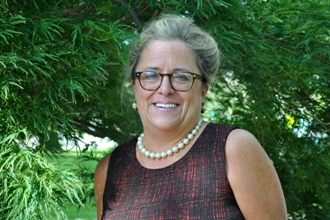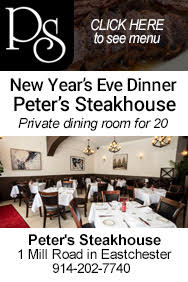From the Mayor: New Municipal Lighting under Consideration; Three Options to Consider

June 15, 2011: The purpose of this week's column is to begin a community conversation about the municipal lighting throughout the Village, particularly in our commercial district.
The Trustees and I must undertake a capital project in the very near future to upgrade lighting, most importantly because of the energy inefficiency of our current configuration as well as a desire on our part to illuminate the Village to reflect the needs of our 2011 walking and driving population.
Currently, the Village is illuminated with 189-watt incandescent bulbs. Incandescent bulbs are energy-inefficient. They are now outlawed in Europe and will cease to be manufactured worldwide in just two years. So the issue is not should we embark on a lighting capital plan, but rather just how we implement a new technology.
Since the development of the incandescent bulb by Thomas Edison in 1879, lighting has remained one of the last technologies still encased in glass tubes, in contrast to cameras, TVs, and computers, which have moved to digital/solid state technology.
As background, our current incandescent bulbs have a life of 2,000 hours, versus 30,000 to 100,000 hours for the modern lighting systems currently available. Over 90% of the power consumed is emitted as heat rather than light, making these bulbs the least expensive to purchase but the most expensive to operate. We estimate that our power bill for street lighting could be reduced by as much as 70%, from the current $100,000 to $30,000, with a capital project employing any one of the newer technologies.
The current $100,000 cost does not even reflect the labor required to constantly change our current bulbs. These bulbs each contain a fragile filament, and one Department of Public Works employee spends a full day per week replacing bulbs destroyed by wind, rain, or snow conditions long before they have reached the end of their average life.
The Trustees and I realize that we need expert help on this project because the type and color of the emitted light as well as the pole design will affect the landscape and ambiance of our Village for years to come. It is quite possible we may have to replace all of the light poles as well as the internal mechanisms. In the coming weeks, we will be interviewing lighting consultants with an expertise in municipal work.
We are also in the process of reviewing all Village lighting studies undertaken in the past that remain in Village files to determine their applicability to our 2011 needs.
In addition, we are reaching out to colleagues both locally and nationwide who have completed lighting upgrades to learn from their successes and failures.
As with most things, all of the new lighting technologies have pluses and minuses.
Induction lighting, which is a cousin to fluorescent lighting, involves the creation of a magnetic field to excite gas, which then generates a white light.
The advantages of the induction system are reduced energy consumption and extremely long bulb life. An induction bulb has an average life of 100,000 hours, versus the incandescent's 2,000.
Induction lighting has a significantly reduced level of energy consumption as well as a less expensive initial cost to change fixtures as compared to the available alternative technologies.
The disadvantages are that the bulbs do contain some mercury, the need for large lamps limits the available fixture choices, and critics believe the quality of light is not as well dispersed as in other options.
A second option is the Light Emitting Diode, or LED lights, which are solid state semi-conductors that convert electrical energy directly into visible light.
The benefits of LEDs include a long bulb life similar to the induction system. It is the most energy-efficient as well as the most environmentally friendly option due to the lack of filaments or mercury and has a very low maintenance cost once installed.
Disadvantages include the lack of suitability for all lighting needs due to limitations on maximum mounting heights, the highest initial cost to install of all the systems, and a perceived glare by some users.
The third viable option, the Advanced Ceramic Metal Halide light, or "CosmoPolis," is currently used throughout Europe. It is highly efficient, versus the fluorescent bulb (30,000 hours of life vs. 2,000), but much less efficient relative to the induction and LED systems.
Benefits include the miniature size of the bulbs, which allows for improved and controllable optics, and both the start-up and maintenance costs are lower than the other two options. Disadvantages include the emission of a white light versus a golden tone that some users prefer, and small amounts of mercury are contained in each bulb.
We look to you, our residents, to share your particular expertise, knowledge/view of lighting in communities you may have visited, and a general opinion, positive or negative, on the lighting systems available. We would also appreciate any thoughts on historical accuracy or aesthetic needs relating to a new lighting system integrating into the character of our Village.
We also anticipate installing lighting poles with the various technologies employed as samples for residents to view and comment on.
Lighting is a major component of the character of our Village and your input is strongly encouraged.
Government & History Directory
Bronxville is a quaint village (one square mile) located just 16 miles north of midtown Manhattan (roughly 30 minutes on the train) and has a population of approximately 6,500. It is known as a premier community with an excellent public school (K-12) and easy access to Manhattan. Bronxville offers many amenities including an attractive business district, a hospital (Lawrence Hospital), public paddle and tennis courts, fine dining at local restaurants, two private country clubs and a community library.
While the earliest settlers of Bronxville date back to the first half of the 18th century, the history of the modern suburb of Bronxville began in 1890 when William Van Duzer Lawrence purchased a farm and commissioned the architect, William A. Bates, to design a planned community of houses for well-known artists and professionals that became a thriving art colony. This community, now called Lawrence Park, is listed on the National register of Historic Places and many of the homes still have artists’ studios. A neighborhood association within Lawrence Park called “The Hilltop Association” keeps this heritage alive with art shows and other events for neighbors.
Bronxville offers many charming neighborhoods as well as a variety of living options for residents including single family homes, town houses, cooperatives and condominiums. One of the chief benefits of living in “the village” is that your children can attend the Bronxville School.
The Bronxville postal zone (10708, known as “Bronxville PO”) includes the village of Bronxville as well as the Chester Heights section of Eastchester, parts of Tuckahoe and the Lawrence Park West, Cedar Knolls, Armour Villa and Longvale sections of Yonkers. Many of these areas have their own distinct character. For instance, the Armour Villa section has many historic homes and even has its own newsletter called “The Villa Voice” which reports on neighborhood news.
Link to Village of Bronxville One Square Mile Monthly Newsletter
Village of Bronxville Administrative Offices
337-6500
Open 9:00am - 4pm excluding holidays and weekends
Bronxville Police Department
337-0500
Open 24 hours
Bronxville Parking Violations
337-2024
Open 9:00am - 4pm excluding holidays and weekends
Bronxville Fire Deparment
793-6400













